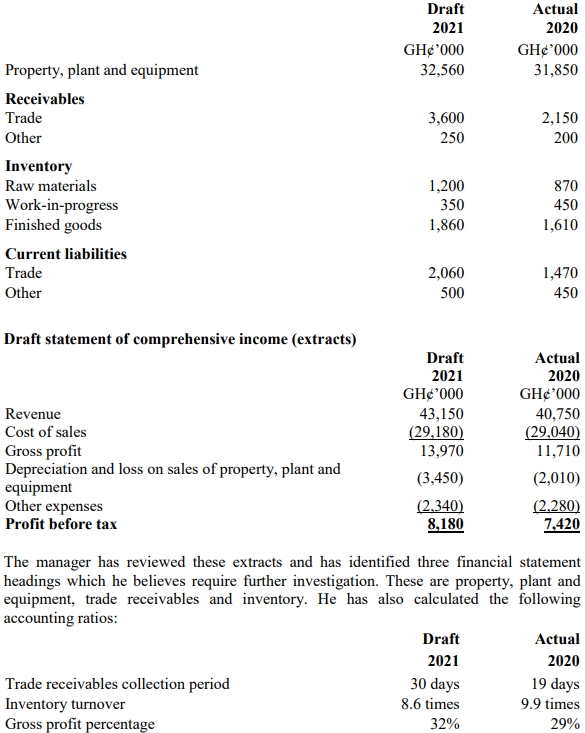- 20 Marks
FA – Nov 2024 – L1 – Q4- Preparation of Financial Statements for a Sole Trader
Prepare the Statement of Profit or Loss and Statement of Financial Position for a sole trader from given financial data and adjustments.
Question
The following list of assets, liabilities, and equity as at 30 June 2023 was extracted from the books of Akuorkor, a sole trader:
Trial Balance as at 30 June 2023
| Item | GH¢ |
|---|---|
| Plant and equipment – cost | 100,000 |
| Accumulated depreciation – Plant & Equipment | 36,000 |
| Office fixtures – cost | 25,000 |
| Accumulated depreciation – Office Fixtures | 2,500 |
| Inventory | 15,250 |
| Trade receivables and prepayments | 17,500 |
| Trade payables and accrued expenses | 8,800 |
| Bank overdraft | 4,425 |
| Loan (10% interest per annum) | 47,500 |
| Capital | 58,525 |
Summary of Receipts and Payments for the Year Ended 30 June 2024
| Receipts | GH¢ |
|---|---|
| Capital introduced | 11,000 |
| Cash from customers | 213,750 |
| Total Receipts | 224,750 |
| Payments | GH¢ |
|---|---|
| Cash drawings (Note 5) | 11,225 |
| Loan repayments (Note 7) | 10,000 |
| Payment to suppliers | 87,800 |
| Rent | 11,000 |
| Wages | 45,000 |
| Office expenses | 6,250 |
| Total Payments | 171,275 |
Additional Information:
- Closing inventory on 30 June 2024 was GH¢13,925.
- Depreciation policies:
- Plant & Equipment: 20% per annum reducing balance.
- Office Equipment: 10% per annum on cost.
- Fixtures & Fittings: Straight-line method over 4 years with a full year’s charge in the year of acquisition.
- GH¢2,500 worth of fixtures & fittings was introduced into the business.
- Prepayments and accrued expenses as at 30 June 2023:
- Rent paid in advance: GH¢1,250
- Accrued wages: GH¢2,150
- Cash drawings included:
- Wages: GH¢3,375
- Payments to suppliers: GH¢2,100
- Advertising leaflets: GH¢1,300 (Half not yet distributed).
- Bank balance per statement: GH¢53,350 after adjusting for unpresented cheques.
- Loan repayments include GH¢4,750 in interest payments.
- Assets and liabilities as at 30 June 2024:
- Rent paid in advance: GH¢1,350
- Accrued wages: GH¢2,625
- Amounts due to suppliers: GH¢6,100
- Amounts due from customers: GH¢11,150
- Major customer went into liquidation owing GH¢8,000; only 20% recoverable.
Required:
Prepare:
i) Statement of Profit or Loss for Akuorkor for the year ended 30 June 2024.
ii) Statement of Financial Position as at 30 June 2024.
Find Related Questions by Tags, levels, etc.
Report an error

